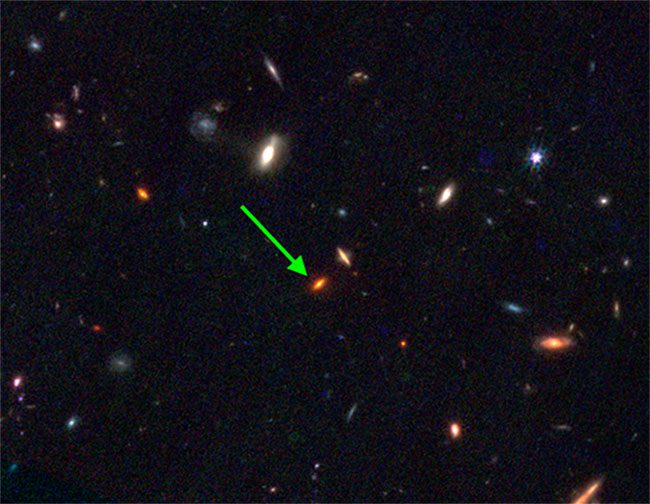This is a “monster” object that came into existence when our universe was only a few hundred million years old.
The world’s most powerful space telescope, the James Webb Space Telescope, recently had a “through time” look into the ancient universe and made a shocking discovery: A galaxy even larger than the Milky Way.
According to Associate Professor Claudia Lagos from the International Center for Astronomy Research, a co-author of the new study, this ancient “monster” poses a significant challenge to the standard cosmological model.
Its existence is utterly illogical!
The Milky Way, which contains Earth, is part of the universe’s giant galaxy group. It formed as a result of dozens of galaxy mergers, gradually growing into a massive monster.
To achieve this, time is required.
However, the aforementioned giant galaxy – named ZF-UDS-7329 – was born too early and was observed while it was still very young.

The image captured by James Webb is of ZF-UDS-7329 from 11.5 billion years ago.
According to Live Science, measurements indicate that the image captured by James Webb shows ZF-UDS-7329 as it was 11.5 billion years ago. Further calculations suggest that at that time, it was already 1.5 billion years old, meaning it was born about 13 billion years ago.
Meanwhile, the universe is approximately 13.8 billion years old.
Astronomers are uncertain when the first star particles began to clump together to form galaxies, but they estimate that this must have occurred slowly, at least a few hundred million years after the Big Bang that birthed the universe.
The first “seedlings” of galaxies were formed by clumps of dark matter mixed with gas.
After the first 1-2 billion years of the universe, dwarf galaxies reached their “teenage” phase, started pairing up, and consuming each other to develop into larger galaxies.
ZF-UDS-7329 has overturned this entire theory.
Our Milky Way also has its origins in the primordial universe, having taken billions of years to grow.
ZF-UDS-7329 may be “younger,” but it has achieved an absurdly large size as early as 11.5 billion years ago, leaving astronomers baffled as to how it accomplished this.
In fact, at the time ZF-UDS-7329 was born, the universe did not have enough dark matter to seed the number of “infant” dwarf galaxies necessary to create it.
Moreover, this galaxy is also a cosmic casualty. Despite being very young at the time it was observed, its star formation process had already ceased.
“This pushes the boundaries of our understanding of how galaxies form and evolve,” acknowledged Dr. Themiya Nanayakkara, a co-author from Swinburne University of Technology (Australia).
They hope to search for more similar mysterious “monsters” to see if there are other hidden mechanisms in the early universe that could explain the existence of these bizarre objects.


















































